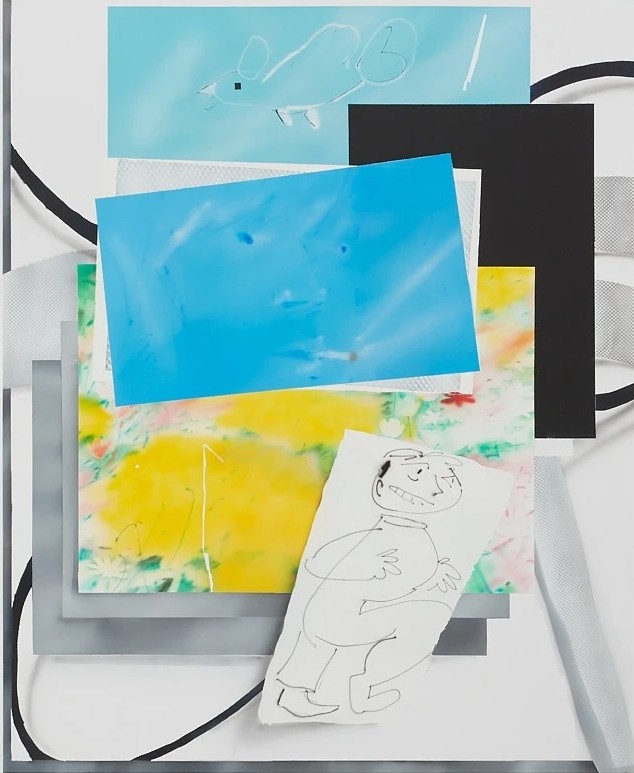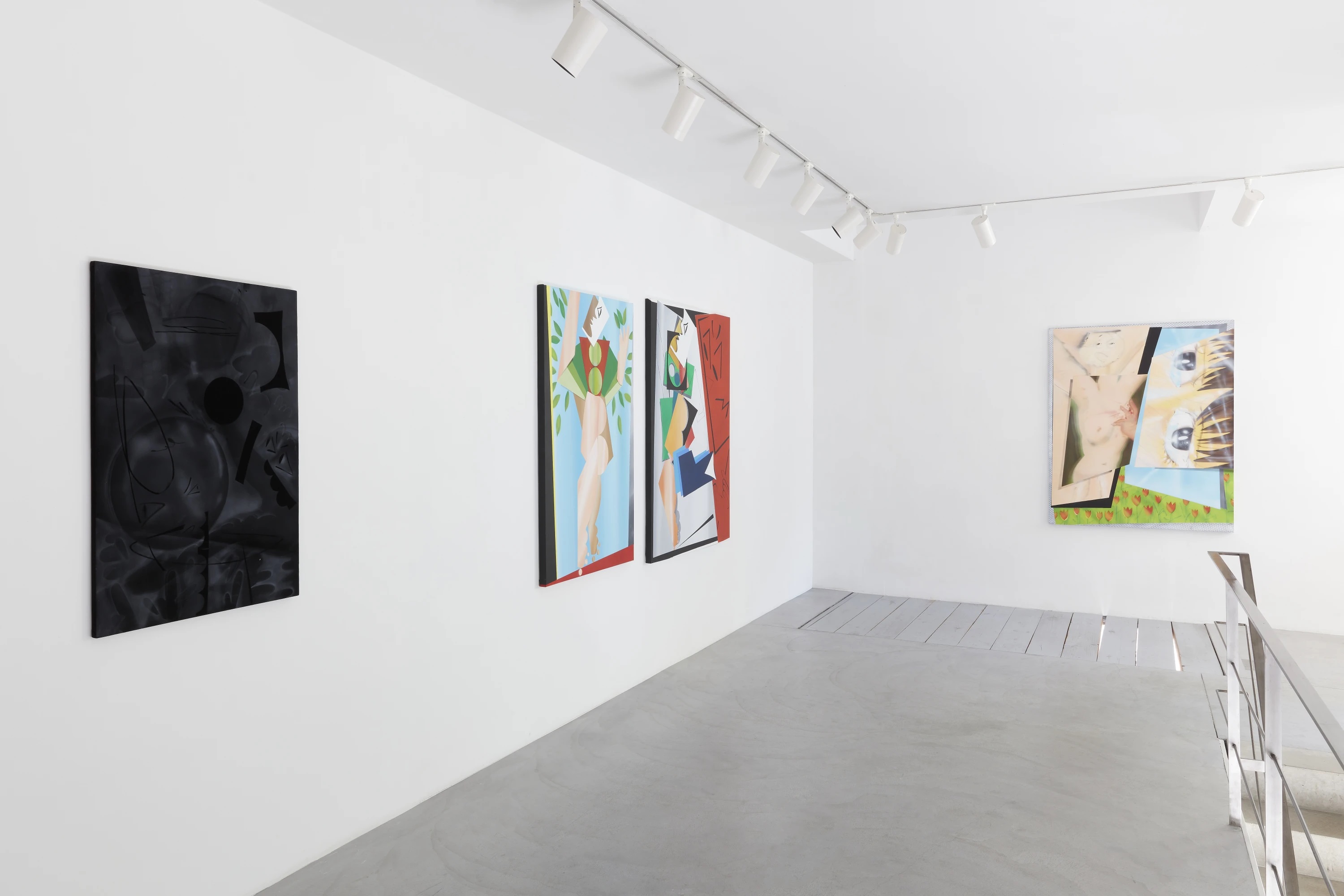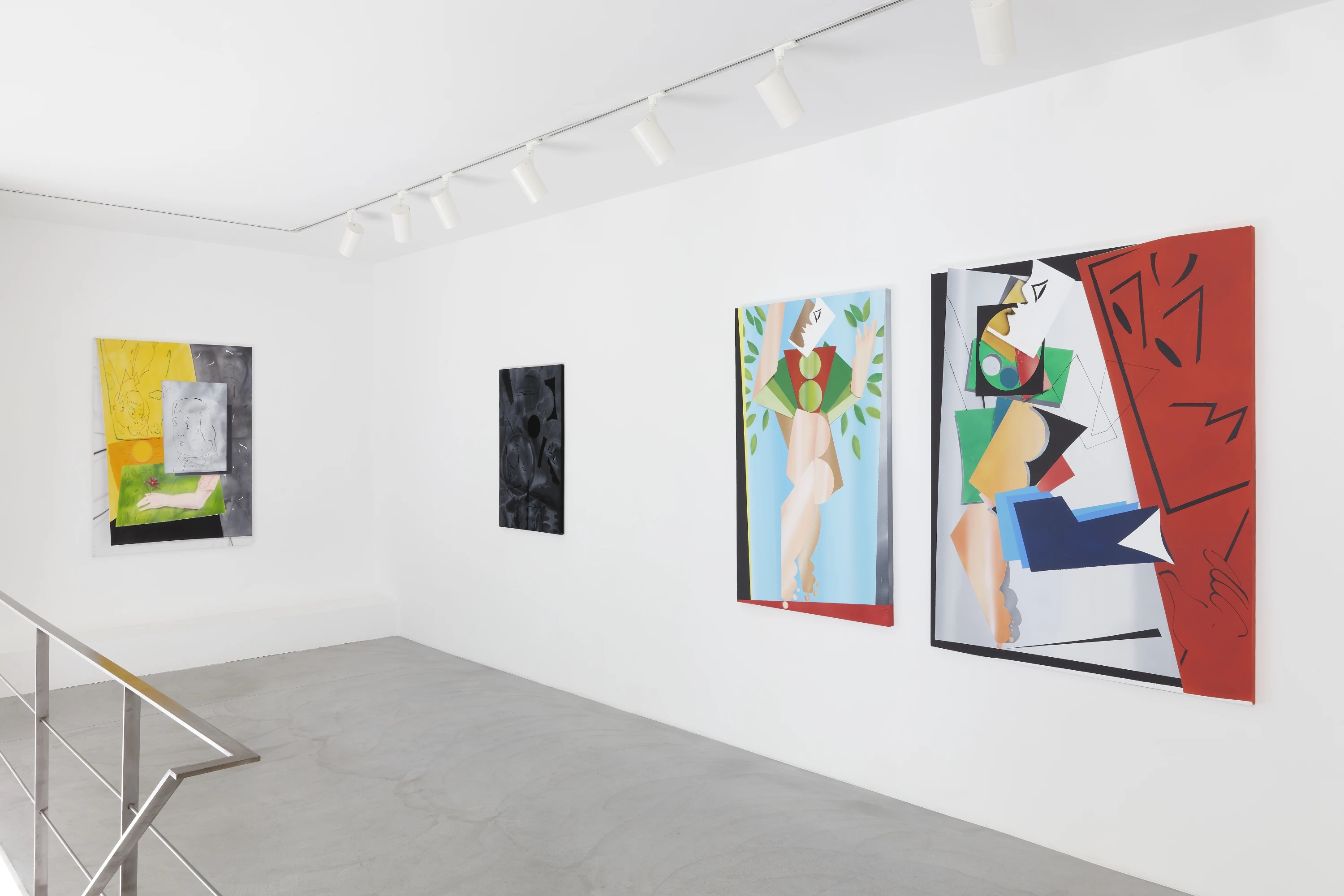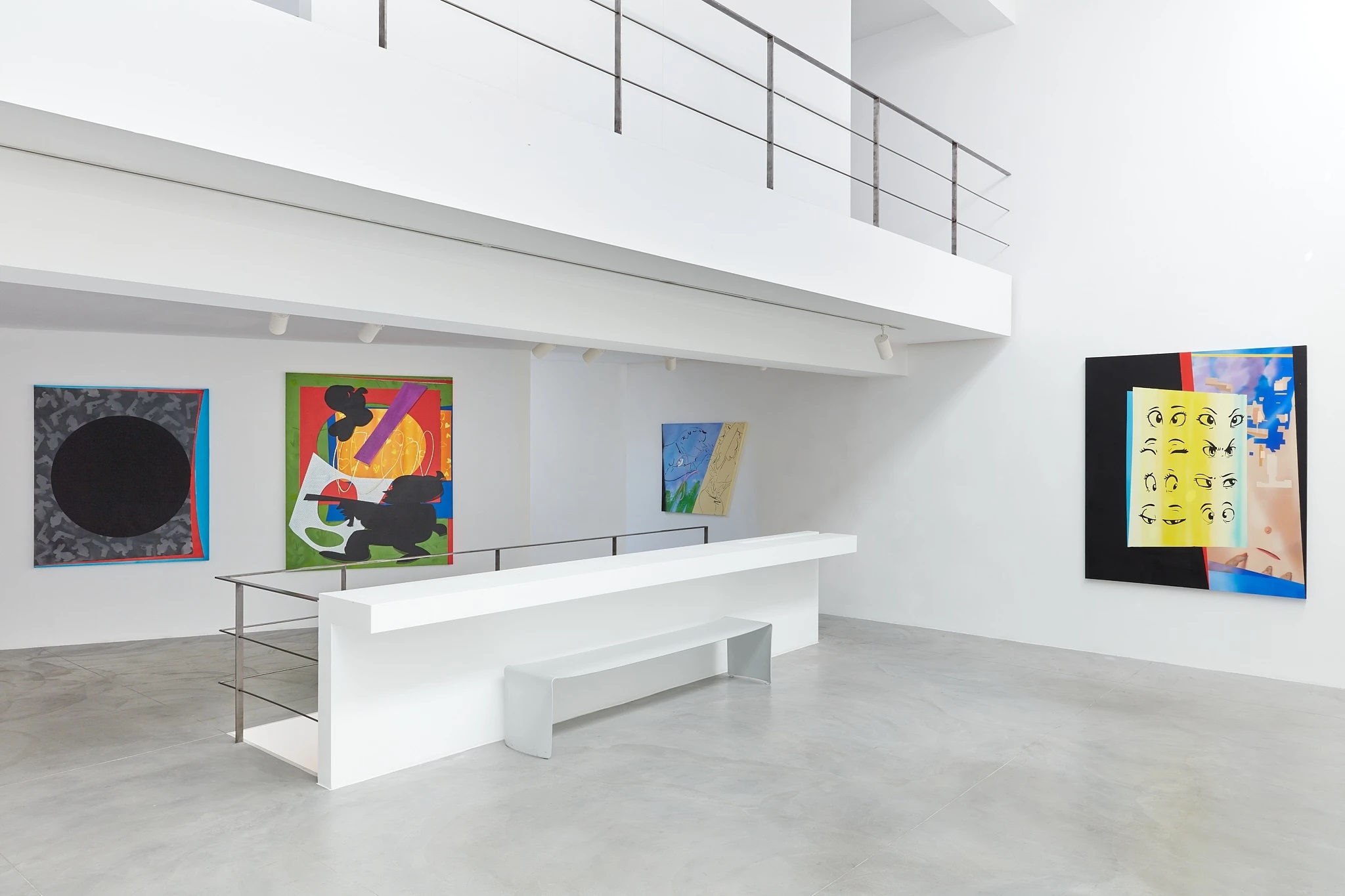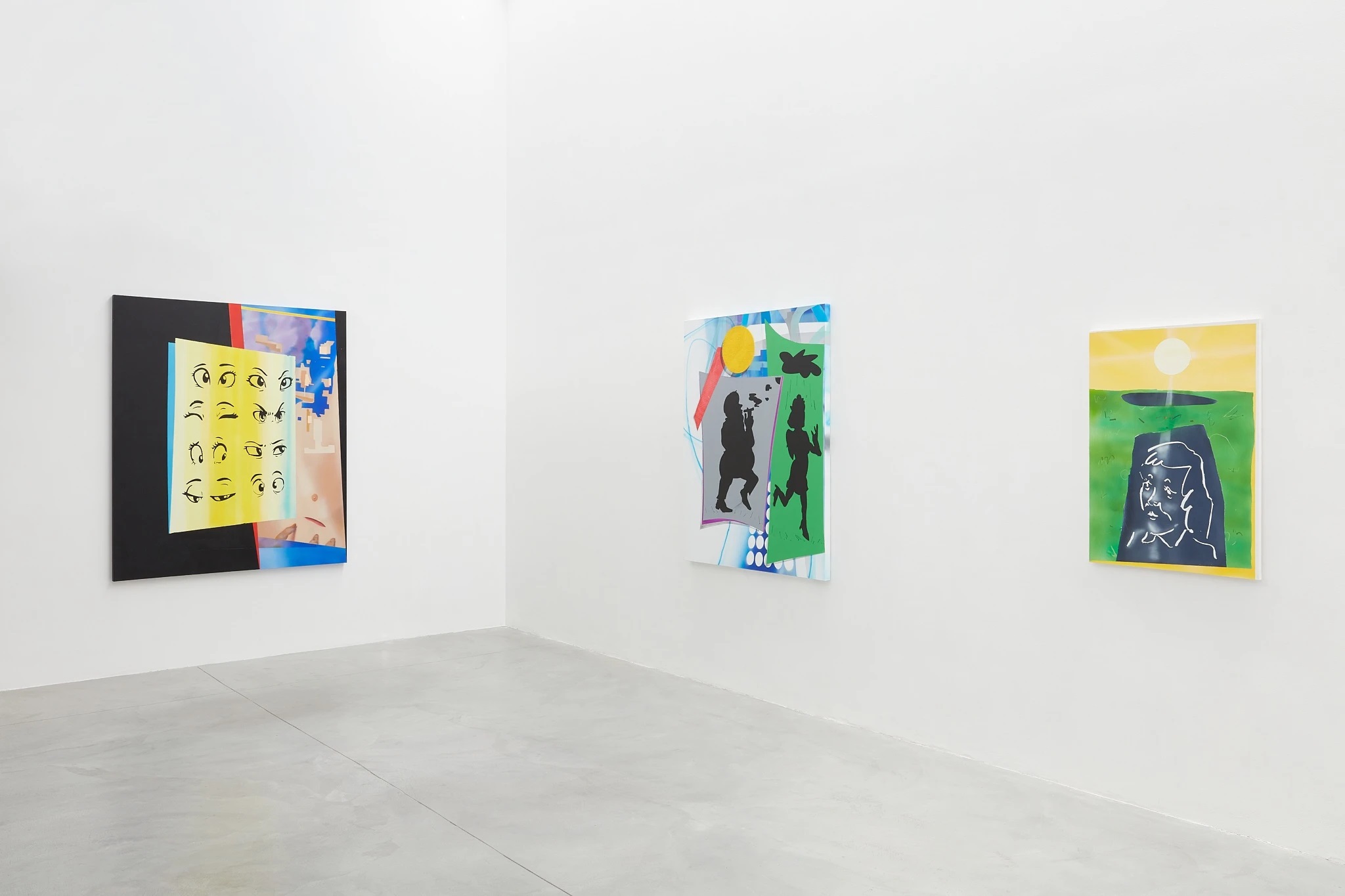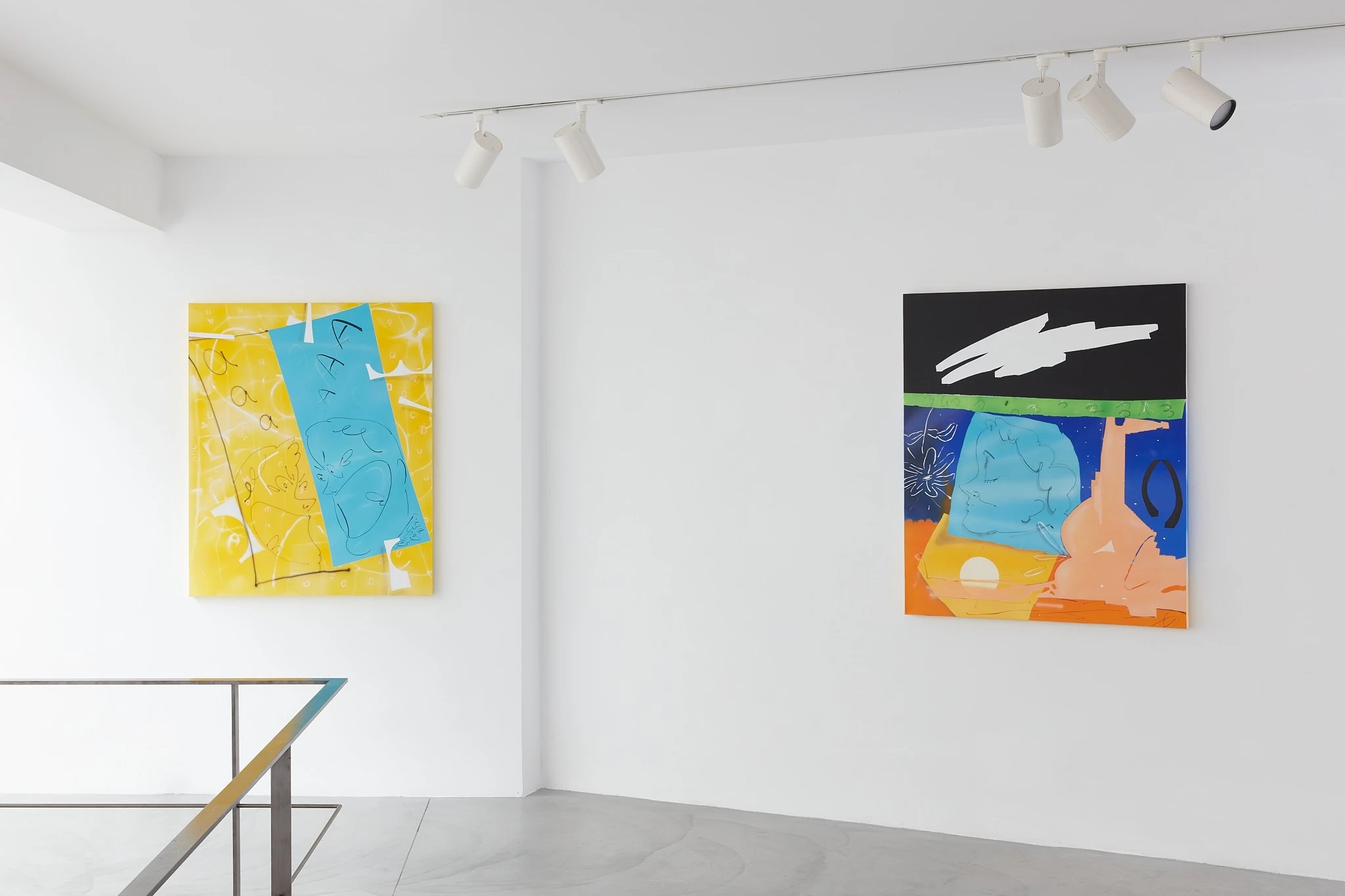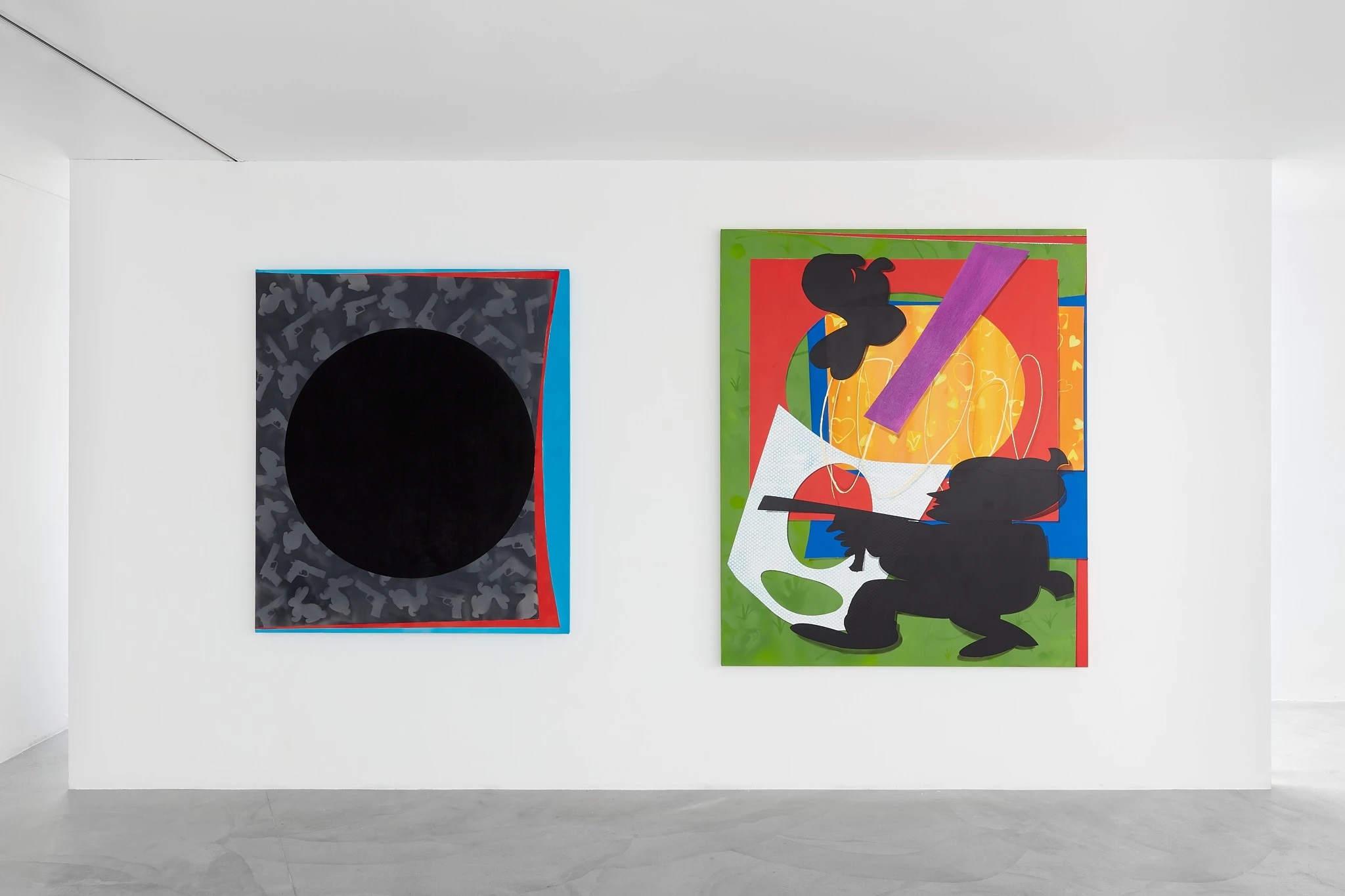Brussels,
3, rue du Cloître Saint-Merri - 75004 Paris
30 May 2020 - 11 July 2020
Galerie Nathalie Obadia in Brussels is pleased to present Dear st. Agatha I am witness of your tears In the land of Tulips, the first solo exhibition of Hoda Kashiha in the gallery.
Born in 1986 in Tehran, the Iranian artist reflects in her body of work on culturally sensitive topics such as identity, femininity and gender issues within the complex socio-political climate in her native country. Her daily observations of hostility, opposition and struggle are transformed into humorous and poetic metaphors on canvas resulting in a disrupted, bold imagery that constantly shifts between reality and imagination, figuration and abstraction.
The flux and tension of her subject matter resonate in the visual language of her work. In a group of 15 paintings for this exhibition, Kashiha explores the non-linear narrative by breaking up the traditional pictorial plane into a collage-based layered composition. This approach allows the artist to depict the antagonist emotional feelings of her fictive characters: love / hate, violence / peace, power / defeat and life / death.
The work entitled Dear st. Agatha I witness of your tears In the land of Tulips combines Kashiha's interest in collage and animation. Inspired by the legend of the virgin martyr "Saint Agatha"1 of Christian antiquity, Kashiha creates a highly metaphorical work on the arc of pain, resistance and perseverance experienced by all mankind around the world today. In a comic and multiple fragmented style, the work shows a nude female chest on top of a male body in the background, juxtaposed with a close-up of eyes filled up with tears and surrounded by a clear blue sky and a green lawn filled with red tulips.
The red tulips link it directly to Iran where it is a national symbol to commemorate both martyrs and justice. This work would be banned for display in her country due to the nudity which underlines the importance to have complete freedom and autonomy within the artistic practice.
The treatment of her subject through sketches is a common practice in her work to ensure a disjointed narrative and the ability to constantly change its storytelling at that stage. While designing these studies, Kashiha experiments with a variety of conventional and media techniques such as paper and digital collages using paper cutouts and digital painting tools. In the works Rabbiting in the Hunting Ground and Rainfall after Smoke these process elements are clearly apparent such as stencil motifs and cut-out figures. The paintings are never an exact copy of the sketches due to the dynamics of painting and the application of new painting techniques such as airbrush and spray gun directly on the canvas.
Her canvases become a fictional space, a moment in which she explores the optical and physical relationship between the fore and backgrounds of the multi-layered pictorial plane, as seen in the work Eyes Never Stop Seeing All Things. The stratification of her work is inspired by the art movement in the 1970s called "Abstract Illusionism"2, in which abstract works were shown with a sense of perspective, depth and shadow.
This exhibition includes two diptych works, which emphasize the versatility of her visual and conceptual narrative. The diptych composition of the work Apollo Pursuing Daphne3 highlights the female gender as the main subject. Within her artistic practice, Kashiha investigates how format and form can accentuate the classical theme of the Greek myth. The use of geometric abstraction of the pictorial space and the body in a clear cubist style, the bold use of color, the multiple timelines and the integration of animation and digital media techniques creates a dynamic visual language. The work displays the delicate balance between men and women, a universal story of all time.
Humor is an important aspect in Hoda's narrative to temper bitter subjects. It is a common mechanism for Iranians to cope and survive current social and political situations. Femininity and female empowerment in the smallest detail are playfully illustrated in her work Untitled where a proud and free women shows her armpit hair to a man who pinches his nose. Such light-hearted, imaginative presentations can encourage openness about many difficult concepts.
Considered as one of the emerging artists in the vibrant Iranian contemporary art scene, Hoda Kashiha's work is a constant reflection on existence and non-existence, visibility and concealment of the paradoxes of human conditions created by politics and society in her native country. While reflecting on sensitive subjects to emphasize the feminine power as opposed to the traditional male domination, she creates bold colorful paintings with an open, free and hopeful spirit. The title of one work captures the artist's mindset in a very poetic way All beautiful lives start floating when dark falls, maybe I am somewhere else above skies.
Born in 1986 in Tehran, the Iranian artist reflects in her body of work on culturally sensitive topics such as identity, femininity and gender issues within the complex socio-political climate in her native country. Her daily observations of hostility, opposition and struggle are transformed into humorous and poetic metaphors on canvas resulting in a disrupted, bold imagery that constantly shifts between reality and imagination, figuration and abstraction.
The flux and tension of her subject matter resonate in the visual language of her work. In a group of 15 paintings for this exhibition, Kashiha explores the non-linear narrative by breaking up the traditional pictorial plane into a collage-based layered composition. This approach allows the artist to depict the antagonist emotional feelings of her fictive characters: love / hate, violence / peace, power / defeat and life / death.
The work entitled Dear st. Agatha I witness of your tears In the land of Tulips combines Kashiha's interest in collage and animation. Inspired by the legend of the virgin martyr "Saint Agatha"1 of Christian antiquity, Kashiha creates a highly metaphorical work on the arc of pain, resistance and perseverance experienced by all mankind around the world today. In a comic and multiple fragmented style, the work shows a nude female chest on top of a male body in the background, juxtaposed with a close-up of eyes filled up with tears and surrounded by a clear blue sky and a green lawn filled with red tulips.
The red tulips link it directly to Iran where it is a national symbol to commemorate both martyrs and justice. This work would be banned for display in her country due to the nudity which underlines the importance to have complete freedom and autonomy within the artistic practice.
The treatment of her subject through sketches is a common practice in her work to ensure a disjointed narrative and the ability to constantly change its storytelling at that stage. While designing these studies, Kashiha experiments with a variety of conventional and media techniques such as paper and digital collages using paper cutouts and digital painting tools. In the works Rabbiting in the Hunting Ground and Rainfall after Smoke these process elements are clearly apparent such as stencil motifs and cut-out figures. The paintings are never an exact copy of the sketches due to the dynamics of painting and the application of new painting techniques such as airbrush and spray gun directly on the canvas.
Her canvases become a fictional space, a moment in which she explores the optical and physical relationship between the fore and backgrounds of the multi-layered pictorial plane, as seen in the work Eyes Never Stop Seeing All Things. The stratification of her work is inspired by the art movement in the 1970s called "Abstract Illusionism"2, in which abstract works were shown with a sense of perspective, depth and shadow.
This exhibition includes two diptych works, which emphasize the versatility of her visual and conceptual narrative. The diptych composition of the work Apollo Pursuing Daphne3 highlights the female gender as the main subject. Within her artistic practice, Kashiha investigates how format and form can accentuate the classical theme of the Greek myth. The use of geometric abstraction of the pictorial space and the body in a clear cubist style, the bold use of color, the multiple timelines and the integration of animation and digital media techniques creates a dynamic visual language. The work displays the delicate balance between men and women, a universal story of all time.
Humor is an important aspect in Hoda's narrative to temper bitter subjects. It is a common mechanism for Iranians to cope and survive current social and political situations. Femininity and female empowerment in the smallest detail are playfully illustrated in her work Untitled where a proud and free women shows her armpit hair to a man who pinches his nose. Such light-hearted, imaginative presentations can encourage openness about many difficult concepts.
Considered as one of the emerging artists in the vibrant Iranian contemporary art scene, Hoda Kashiha's work is a constant reflection on existence and non-existence, visibility and concealment of the paradoxes of human conditions created by politics and society in her native country. While reflecting on sensitive subjects to emphasize the feminine power as opposed to the traditional male domination, she creates bold colorful paintings with an open, free and hopeful spirit. The title of one work captures the artist's mindset in a very poetic way All beautiful lives start floating when dark falls, maybe I am somewhere else above skies.
